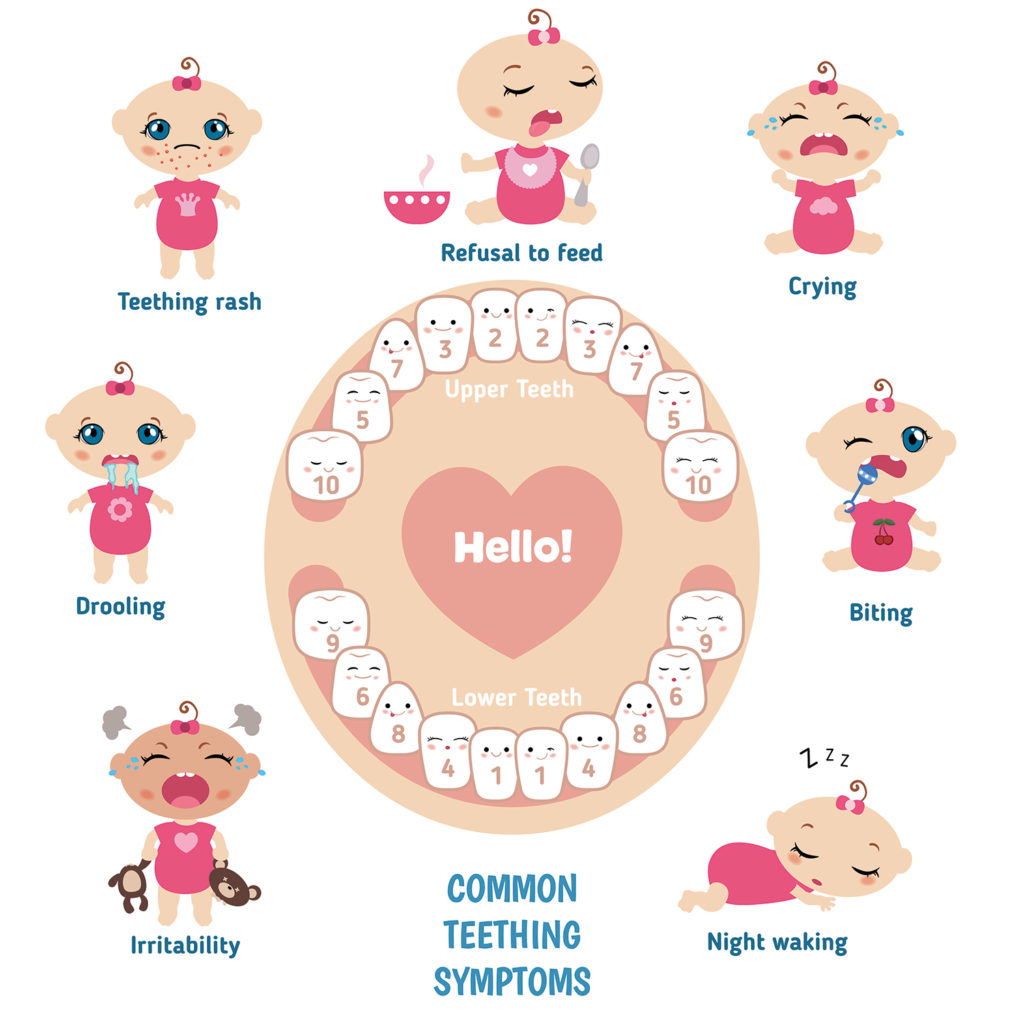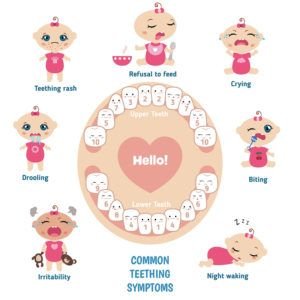Wondering if can teething cause diaper rash? Discover how teething may lead to skin irritations & tips to soothe your little one’s discomfort.
What is Teething?

Teething is a natural process that occurs when a baby’s first teeth begin to emerge through the gums. This typically happens between the ages of six months & two years. As a parent, I vividly recall the times my little one experienced teething pains, causing discomfort & restlessness. The most common signs of teething include irritability, drooling, biting objects or fingers, & a heightened need for comfort. Although teething itself is a normal part of development, it can lead to other issues, like diaper rash.
During teething, a baby’s body goes through numerous changes. The teeth cutting through the gums can cause inflammation in the surrounding areas, leading to an increase in saliva production. This excess saliva can sometimes alter a baby’s stool consistency, potentially leading to more frequent or loose bowel movements. As a result, the skin around the diaper area may become irritated due to constant exposure to urine & feces, potentially causing diaper rash. Parents often connect these dots between teething & diaper rash without entirely realizing the physiological reasons behind it.
How Does Teething Impact Diaper Rash?
The link between teething & diaper rash is often indirect but significant. When a baby is teething, they may exhibit changes in their gastrointestinal system, leading to looser stools. This increase in diaper changes can create a situation where the skin in the diaper area becomes more susceptible to irritation. Teething can also heighten the baby’s discomfort level, leading to more crying & movement. This agitation may result in more frequent diaper changes, creating more opportunities for skin irritation.
And another thing, the acidity of a baby’s stool during teething can also spike, increasing the risk of diaper rash as it could more easily irritate sensitive skin. Parents should be on alert for any signs of diaper rash that may arise during this developmental period. It’s crucial to maintain good diaper hygiene & check for signs of redness or irritation.
| Common Teething Symptoms | Potential Effects on Diaper Rash |
|---|---|
| Increased drooling | May lead to skin irritation & more frequent changes |
| Agitation & irritability | Results in more frequent diaper changes |
| Loose stools | Increases skin exposure to acids in stool |
Signs That Diaper Rash May Be Caused by Teething
Identifying the signs that your baby’s diaper rash is a result of teething is crucial. Here are some key indicators that parents should watch for:
- Rash appearing during teething phases, especially at the same time as new teeth emerge.
- Presence of more frequent, softer stools that might irritate the delicate skin.
- Rash that is typically located on the buttocks & thighs, more consistent with diarrhea-related irritation.
- Signs of additional discomfort, such as fussiness or crying when the diaper is being changed, indicating that the area is tender to the touch.
It’s essential to differentiate between a standard diaper rash & one caused by teething. While standard rashes can occur from prolonged exposure to moisture, irritation, or an allergic reaction to a diaper, teething-related rashes often coincide with new teeth. Knowing this can help you treat it appropriately & decide whether to seek advice from a pediatrician.
Preventive Measures Against Diaper Rash During Teething
Preventing diaper rash during teething can save parents from additional distress. Here are several steps you can take:
- Regularly change diapers to minimize prolonged exposure to moisture & fecal matter.
- Use a high-quality diaper cream that forms a protective barrier on the skin.
- Avoid tight-fitting diapers. Ensure your baby’s diaper is the correct size to allow for ventilation.
- Maintain a clean diaper area. Gently cleaning the area during changes with a mild soap & water can help minimize irritation.
Here’s a simple table summarizing products & methods that can help reduce the likelihood of diaper rash during teething:
| Preventative Measures | Benefits |
|---|---|
| Frequent diaper changes | Reduces moisture & irritation |
| Diaper cream | Creates a protective barrier |
| Mild soaps | Lessens the chances of allergic reactions |
Implementing these measures can go a long way in ensuring your baby’s skin remains healthy & irritation-free as they navigate through teething.
Home Remedies for Treating Diaper Rash Related to Teething
When your baby suffers from diaper rash due to teething, several home remedies can provide relief & promote healing:
- Allow for diaper-free time: Letting your baby go without a diaper for short periods can help the skin air out & dry, which is beneficial for healing.
- Use natural remedies, such as coconut oil or aloe vera, known for their soothing & antibacterial properties.
- Increase liquid intake: Hydrating your baby might help dilute stool & reduce acidity, lessening irritation.
- Warm baths can soothe irritated skin & clean the diaper area effectively.
These home remedies can be quite useful if parents notice their child displaying signs of diaper rash. If the rash persists, it is always advisable to seek medical attention from a healthcare professional.
Consulting a Pediatrician: When to Seek Help
:max_bytes(150000):strip_icc()/VWH-NEWS-What-Causes-Mild-to-Severe-Diaper-Rash-TEXT-FINAL-1-1-a8a8f4ab818b418c9e4e37e1b5958e94.png)
Knowing when to consult a pediatrician regarding diaper rash exacerbated by teething is critical for effective care. If your baby’s rash appears severe or there are signs of infection, such as pus, blisters, or fever, it’s essential to reach out to a healthcare professional. Here are some warning signs:
- Unusual swelling or redness in the affected area
- Presence of signs of infection such as streaks of red extending from the rash area
- Persistent rash that doesn’t improve with home treatments
- Significant discomfort or if the baby seems unusually lethargic
In such cases, a pediatrician can provide tailored advice & may suggest medicated creams or ointments. It’s crucial for parents not to overlook these signs & to act promptly, as untreated infections can lead to more serious complications.
“The connection between teething & diaper rash is often overlooked, but it plays a crucial role in an infant’s discomfort,” – Yazmin Grant.
Long-term Effects of Teething on Diaper Health
While diaper rash related to teething is often a temporary issue, parents should remain aware of its potential long-term impacts. Continuous rashes can lead to more serious skin conditions if not treated properly. Chronic diaper rash can cause fungal infections or skin infections that might threaten overall health.
Ensuring modular care of the diaper area through consistent checks & balanced preventive methods is essential. And another thing, maintaining good practices in hygiene is crucial for ongoing skin health. The skin barrier can be weakened over time if proper care measures are not followed during periods of excessive irritation, leading to long-term sensitivity.
Maintaining a routine that includes checking the diaper area regularly & ensuring proper hygiene can mitigate these long-term effects.
Common Misconceptions About Diaper Rash & Teething

Despite the evident correlation between teething & diaper rash, several misconceptions persist about their relationship:
- Many believe teething does not cause any skin issues. While it may not directly cause rashes, the changes during this phase can lead to diaper rash.
- Some assume that all diaper rash is due to wetness or poor hygiene. It’s vital to understand that teething-related stool changes can also lead to skin irritations.
- There’s a belief that diaper rash only affects children in diapers for prolonged periods. In reality, any baby going through teething can develop these rashes regardless of how frequently they are changed.
Clarifying these misconceptions can help parents adopt better practices, leading to improved care options for their children. Awareness is vital for recognizing & addressing concerns relating to teething & diaper rash.
In conclusion, understanding the link between teething & diaper rash empowers parents to provide adequate care during this challenging yet crucial developmental phase. Prioritizing skincare & hygiene can lead to better outcomes & a happier, healthier baby.
Frequently Asked Questions
Can teething cause diaper rash?
Teething can lead to increased saliva production, which may create a moist environment that can irritate the skin. While not a direct cause, this can make babies more susceptible to diaper rash.
What are the signs of teething?
Signs of teething include excessive drooling, irritability, a desire to chew on objects, swollen gums, & sometimes a slight increase in temperature.
How can I prevent diaper rash during teething?
To prevent diaper rash, keep the baby’s diaper area dry, change diapers frequently, & use a barrier cream. It can also help to give the baby some time without a diaper to air out the skin.
When should I see a doctor for a teething-related rash?
If the rash is persistent, severe, or accompanied by other concerning symptoms such as fever or unusual behavior, it is advisable to consult a pediatrician for further evaluation.
Are there any home remedies for diaper rash caused by teething?
Home remedies for diaper rash may include applying a mixture of equal parts of water & apple cider vinegar, using coconut oil, or using baking soda baths to soothe irritated skin. Always consult a healthcare professional before trying home remedies.
Conclusion
In summary, can teething cause diaper rash? While teething itself doesn’t directly cause diaper rash, it can lead to more drooling & changes in bowel movements. These changes can create a perfect storm for rashes. It’s important to watch your baby’s skin closely during this time. Keeping the diaper area clean & dry can help prevent any irritation. If a rash appears, gentle treatments usually work well. If you’re ever unsure, reaching out to your pediatrician is a good idea. Remember, teething is a part of growing up, & so are diaper rashes!



![Can Teething Cause Diaper Rash? [Understand in Details]](https://playgrounddad.com/wp-content/uploads/2025/03/Chicco-KeyFit-79578-DIMS-150x150.jpg)
![Can Teething Cause Diaper Rash? [Understand in Details]](https://playgrounddad.com/wp-content/uploads/2025/03/61Wg116lTYL._AC_UF10001000_QL80_-150x150.jpg)
